For many decades, chlorine has been used in disinfecting water of contaminants such as bacteria and hydrogen sulfide. However, like most chemical additives, chlorine also leaves its own remnants in the water which affects its taste and odor. The good news is that these remnants can easily be dealt with.
So, does chlorine evaporate from tap water? Yes, because chlorine is slightly volatile, it will evaporate slowly from the water’s surface if left still for 1 – 5 days.
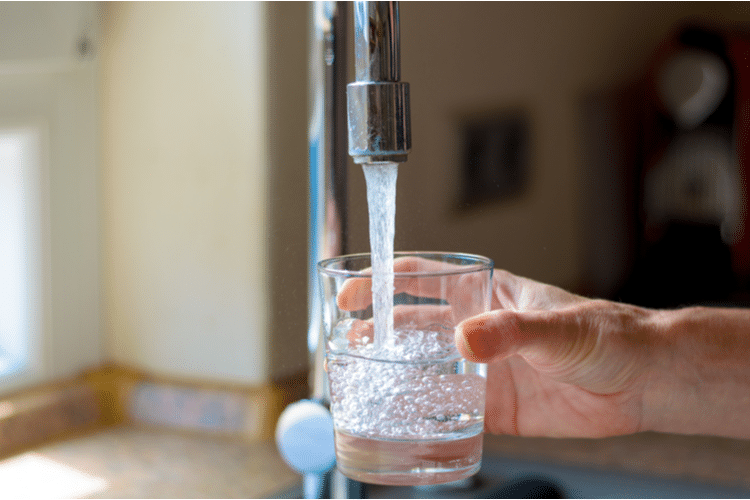
How Long Does It Take For Chlorine To Evaporate From Water?
It takes approximately 1–5 days for chlorine to evaporate from water if kept in a storage unit. However, the process depends on the volume of the water that needs to be dechlorinated and the chlorine concentration.
If the chlorine concentration is too high, the evaporation process might even pass the five-day mark. However, the chances that your tap water has that much chlorine is quite low.
Although up to 4 mg of chlorine per liter is deemed to be safe by the CDC, tap water across the USA mostly has 1–3 mg/L of this disinfectant. As long as it’s in that range, it won’t take more than five days since 2 mg/L takes only four days to evaporate completely.
That said, there are a couple of methods that can quicken the evaporation period, like boiling, aeration, or exposing the water to ultraviolet light.
The Importance of Water Dechlorination
According to the CDC, chlorine concentrations of up to 4 mg/L are safe in drinking water. If the chlorine levels in your water exceed 4 mg/L, consider seeking ways of reducing chlorine in your tap water.
Chlorine decontaminates water of disease-bearing contaminants like bacteria, but high chlorine concentration causes long-term health issues like congenital anomalies and even bladder cancer. Moreover, even safe concentrations of chlorine can be unpleasant for some due to its bleach-like odor and taste.
That said, you can test your water chlorine by either purchasing a home water testing kit or by sending a water sample to a certified lab. In addition, look out for common signs of chlorine smell in the house.
You can also implement certain CDC-approved tests. These tests vary from inexpensive methods such as pool kits to expensive but highly reliable tools like digital colorimeters.
6 Faster Ways to Remove Chlorine From Your Water
Evaporation is one of the best methods to eliminate chlorine from water. However, although it’s quite easy, waiting 4-5 days to have a cup of drinking water requires quite the patience.
So, why not quicken the chlorine removal process with the methods we’re going to list below?
1. Boil the Water
Boiling is one of the best ways to make water safe for drinking. It is also an effective way to remove chlorine from water since it’s one of the fastest methods to do so.
For every eight minutes you boil the water, 1 mg/L of chlorine evaporates. So, just to be sure that all the chlorine is removed, it’s best to leave the water boiling for at least 20 minutes.
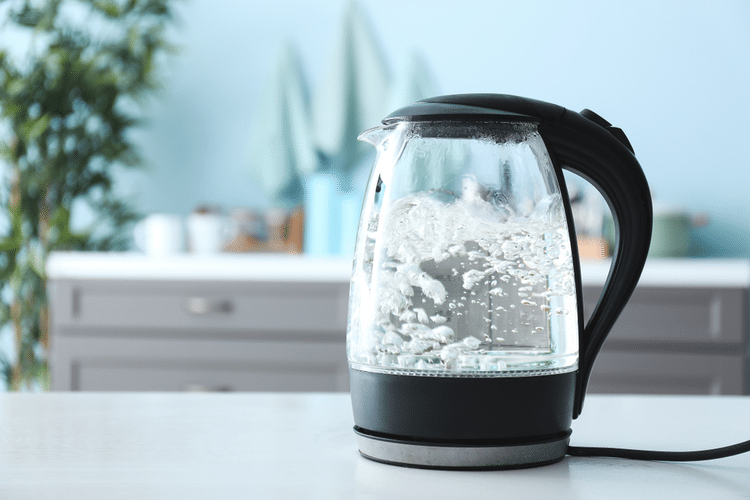
Boiling also removes other harmful disinfectants and contaminants from the water, including chloramine. Having said that, chloramine removal via boiling water may take a little longer since it’s considerably less volatile than chlorine.
2. Use Water Aeration
Water aeration is a process in which large amounts of air pass through the water and gather contaminants such as dissolved gasses, ultimately venting them out. Although it’s a more complex procedure that requires you to install a system, it’s less efficient than boiling because it takes 12-24 hours to dechlorinate the water.
However, for those who want to dechlorinate their aquariums or need a dechlorinating method for industrial purposes, aeration might prove more beneficial since it can deal with large volumes of water.
3. Install a UV Light System
Removing chlorine from water through ultraviolet light filter is expensive, but it’s by far the most efficient way to do it since UV rays can remove 5 mg/L chlorine in a matter of minutes.
First, you’ll need to fill up a storage tank with water and install a UV lamp, which might be costly as the bulb may need to be replaced frequently depending on how often it’s used. Once you’ve installed the bulb, you should ensure the UV rays point directly to the tank.
To remove the chlorine, a UV light wavelength of about 180-400 nanometers for every square cm of water is needed. You’ll also need a radiant energy density of 600 milliliters.
Having said that, nowadays, many filtration systems feature a UV sterilizer as well. Opting for those might be more economical and convenient in the long run.
Should you choose to install a UV Light filter to remove chlorine, we recommend the Kind Water Systems Water Purifier for this purpose.
4. Add Vitamin C
Adding one of the two forms of vitamin C —ascorbic acid or sodium ascorbate— to the water is an effective and safe method to neutralize chlorine. However, it’s important to measure the amount of vitamin C you put in the water.
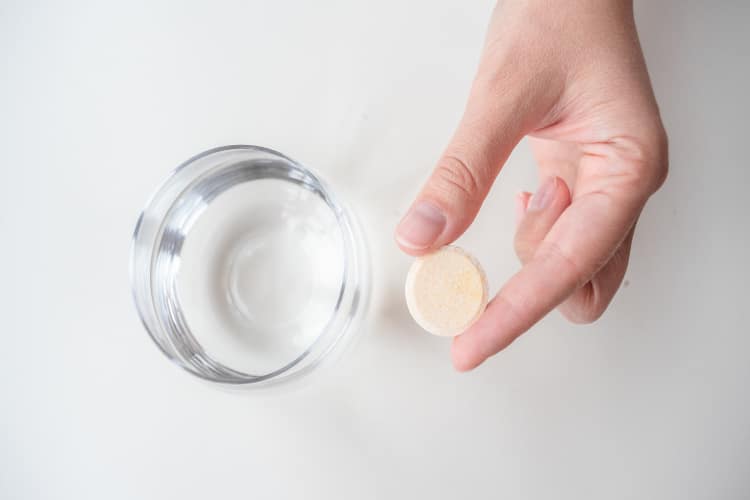
For instance, a gram of ascorbic acid can take care of 1 mg/L of chlorine per 100 gallons of water. To make sure that average American tap water is completely dechlorinated, 3 grams should suffice. Once you have the right amount, sprinkle it on the water surface and stir gently.
In the end, you might end up purchasing and using lots of vitamin C, but the good news is that it’s cheap. Moreover, it has a shelf life of one year when kept in a dry and dark place, so you can purchase it in large quantities to dechlorinate your water.
5. Add Sodium Metabisulfite
Like ascorbic acid, sodium/potassium metabisulfite is effective in dechlorinating water. The chemical comes in the form of small tablets. The number of tablets to use depends on the amount of water in your tank. Putting one tablet in 20 gallons of water should take care of the issue.
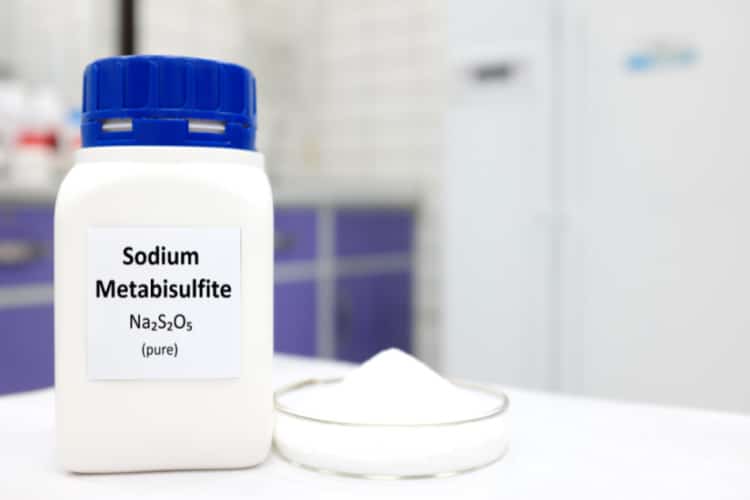
The tablet will neutralize the chlorine and chloramine before evaporating. This method works quickly, and most breweries and wineries use it.
However, if it’s used in filtration systems, it may easily become an incubator for bacteria, and in the end, cause damage to filters and RO membranes. Moreover, it may give a bad taste to the drinking water.
6. Use a Water Filter
Filtration is the most effective and fastest way to deal with any contaminant. Water filtration systems that use a process known as reverse osmosis are one of the best methods to purify water. The best part is that you’ll take care of the chlorine issue at the tap, and you won’t need tanks!
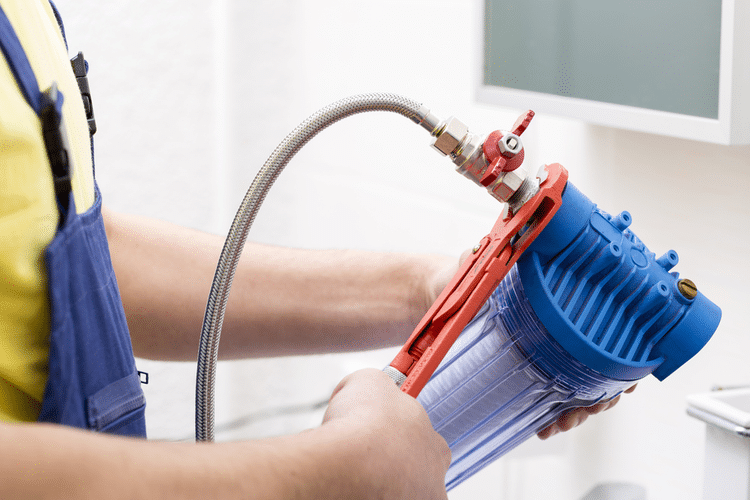
In reverse osmosis, water passes through a permeable membrane that removes ions, particles, and impurities, including chlorine. So, you don’t need to wait in front of your heater for the water to boil, or you don’t need to handle chemicals like sodium metabisulfite.
In addition, many filtration systems feature a UV sterilizer as well. Therefore, even if their filters can’t efficiently remove chlorine, the UV sterilizer is sure to do so.
However, some filtration options are costly, and installations can be daunting. Additionally, maintaining the filters periodically adds to the overall cost.
Should you choose to install a water filter to remove chlorine, we recommend the AquaTRU reverse osmosis system for this purpose.
Thanks. Very helpful!